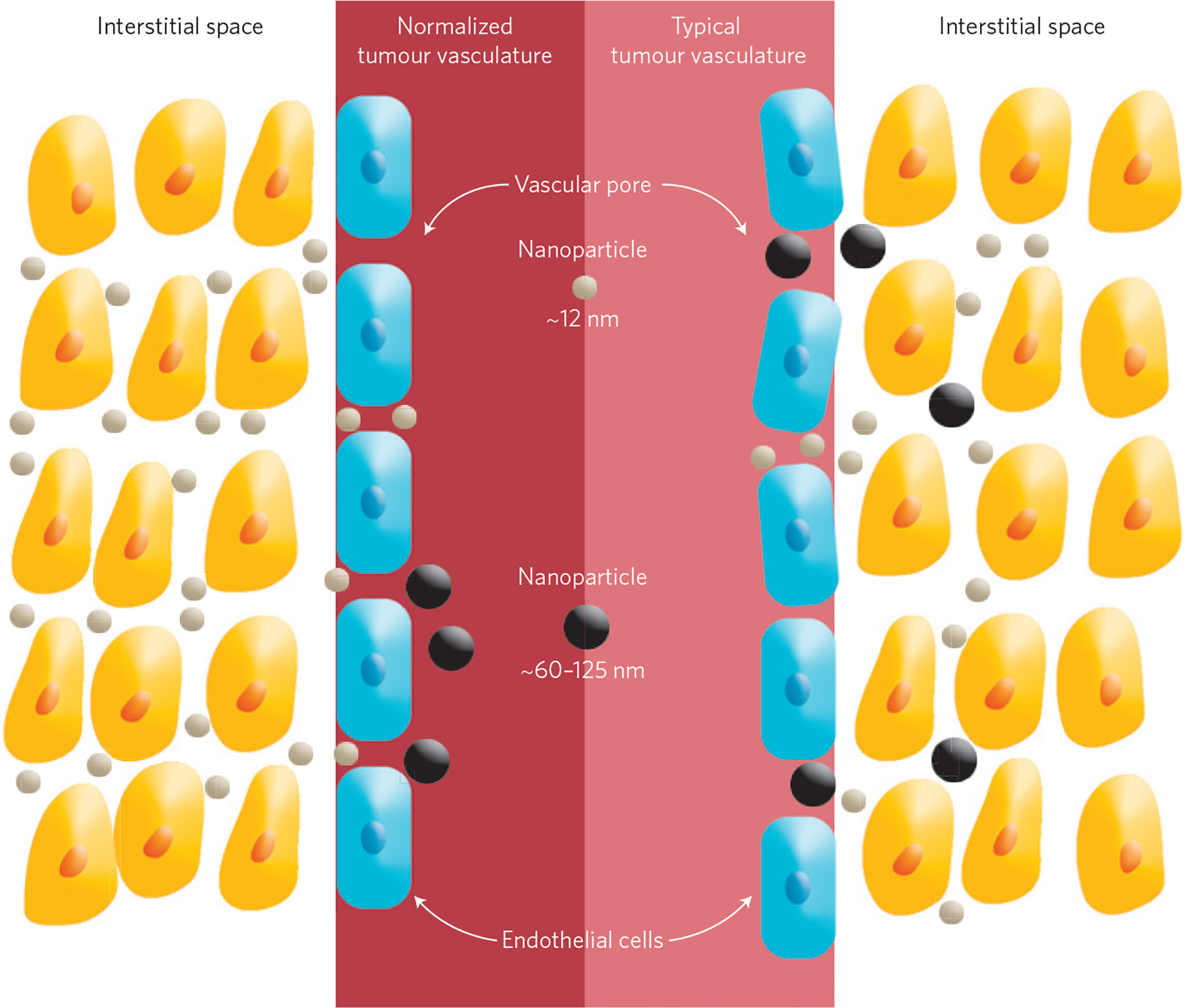Figure 1 |.

Size-dependent transport of nanotherapeutics. The blood vessels in a typical tumour contain pores of various sizes, which allow nanoparticles of different sizes (black and grey) to enter the tumour (right). However, these pores also cause the interstitial fluid pressure to increase, which limits convective transport of nanoparticles into the tumour. Decreasing the size of these pores (a process called vascular normalization) increases convection and the interstitial penetration of small (~12 nm) nanotherapeutics (left). However, for larger nanoparticles (~60–125 nm) this increase in convection is overridden by an increase in steric and hydrodynamic hindrances.
